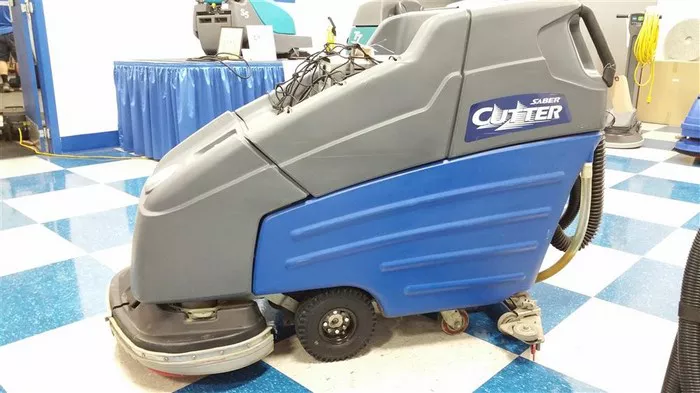Scrubbers are essential cleaning tools used in various industries to maintain clean and hygienic environments. They are particularly effective for cleaning large floor areas, such as those found in commercial buildings, warehouses, and industrial facilities. Understanding the two main types of scrubbers can help you choose the right equipment for your needs and ensure efficient cleaning. This article will explore the two primary types of scrubbers, their features, and their applications.
1. Walk-Behind Scrubbers
Walk-behind scrubbers are among the most common types of scrubbers used for floor cleaning. They are designed for use in smaller to medium-sized areas where manual operation is practical. Here’s a detailed look at walk-behind scrubbers:
Design and Operation
Walk-behind scrubbers are operated by pushing the machine manually while walking behind it. They come in various sizes and configurations, from compact models for tight spaces to larger units for more extensive areas. The key components include:
Scrubbing Brushes or Pads: These are located at the base of the scrubber and come into direct contact with the floor. They rotate to scrub the floor surface and can be replaced or adjusted based on the type of floor and cleaning requirements.
Solution Tank: This tank holds the cleaning solution, which is dispensed onto the floor during operation. It is usually refillable and comes in different sizes to match the scrubber’s capacity.
Recovery Tank: The recovery tank collects the dirty water and debris that are vacuumed up during the cleaning process. It helps keep the floor dry and ensures that only clean water is applied to the surface.
Vacuum System: The vacuum system creates suction to remove the dirty water from the floor and direct it into the recovery tank. This feature helps to reduce drying time and maintain a clean finish.
Advantages
Cost-Effective: Walk-behind scrubbers are generally more affordable compared to ride-on models. They are a good choice for facilities with moderate cleaning needs.
Versatility: These scrubbers are versatile and can be used on various types of flooring, including tile, vinyl, and concrete. They are suitable for cleaning smaller spaces and are effective for detailed work.
Ease of Use: Walk-behind scrubbers are relatively easy to maneuver, especially in confined spaces. Operators can control the machine’s speed and direction with minimal effort.
Applications
Walk-behind scrubbers are commonly used in:
Retail Stores: To maintain clean and attractive sales floors.
Schools: For regular maintenance of hallways and classrooms.
Healthcare Facilities: To ensure high hygiene standards in hospitals and clinics.
Offices: For routine cleaning of lobbies, hallways, and other common areas.
see also: Are Floor Scrubbers and Floor Polish the Same Thing?
2. Ride-On Scrubbers
Ride-on scrubbers are larger and more advanced than walk-behind models. They are designed for larger areas where efficient and continuous cleaning is required. Here’s an in-depth look at ride-on scrubbers:
Design and Operation
Ride-on scrubbers are equipped with a seat for the operator, allowing them to ride on the machine while it cleans. This design is suitable for extensive floor areas and industrial environments. Key features include:
Large Scrubbing Brushes or Pads: Ride-on scrubbers have larger brushes or pads compared to walk-behind models. This allows them to cover more ground in less time.
Larger Solution and Recovery Tanks: The solution and recovery tanks on ride-on scrubbers are significantly larger, reducing the frequency of refills and emptying. This feature supports extended cleaning sessions.
Advanced Vacuum System: The vacuum system in ride-on scrubbers is more powerful, ensuring efficient suction and faster drying times.
Controls and Display: Ride-on scrubbers come with advanced controls and displays that allow the operator to adjust settings such as brush speed, solution flow rate, and cleaning modes. Some models also feature programmable cleaning schedules.
Advantages
Increased Efficiency: Ride-on scrubbers cover large areas quickly due to their larger size and powerful components. They are ideal for high-traffic areas and large facilities.
Comfort: The ride-on design reduces operator fatigue by allowing them to sit while operating the machine. This feature is particularly beneficial during long cleaning sessions.
Extended Runtime: With larger solution and recovery tanks, ride-on scrubbers can operate for longer periods without the need for frequent refills or emptying. This makes them suitable for continuous, heavy-duty cleaning.
Applications
Ride-on scrubbers are commonly used in:
Warehouses: To maintain cleanliness in large storage areas and aisles.
Manufacturing Facilities: For cleaning production floors and industrial spaces.
Shopping Malls: To ensure the cleanliness of extensive retail areas and common spaces.
Airports: For efficient maintenance of terminals and concourses.
Choosing the Right Scrubber
Selecting the right scrubber depends on several factors, including the size of the area to be cleaned, the type of flooring, and the frequency of cleaning required. Here’s a brief guide to help you make an informed decision:
Size of the Area: For smaller areas, a walk-behind scrubber may be sufficient. For larger areas or facilities with high traffic, a ride-on scrubber is more appropriate.
Type of Flooring: Consider the type of flooring when choosing a scrubber. Different brushes or pads are available for various surfaces, including carpet, tile, and concrete.
Frequency of Cleaning: If you need to clean frequently or have high-traffic areas, a ride-on scrubber’s larger tanks and increased efficiency may be beneficial.
Budget: Walk-behind scrubbers are generally more affordable, while ride-on models are a significant investment but offer higher efficiency and comfort.
Conclusion
Understanding the two main types of scrubbers—walk-behind and ride-on—can help you select the right equipment for your cleaning needs. Walk-behind scrubbers are ideal for smaller spaces and offer a cost-effective solution with versatility and ease of use. Ride-on scrubbers, on the other hand, are designed for large areas and provide increased efficiency, comfort, and extended runtime. By considering factors such as the size of the area, type of flooring, frequency of cleaning, and budget, you can choose the scrubber that best meets your requirements. Both types of scrubbers play a crucial role in maintaining clean and hygienic environments, enhancing the overall cleanliness and safety of various facilities.

